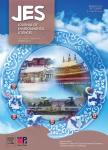Exploring formation mechanism and source attribution of ozone during the 2019 Wuhan Military World Games:Implications for ozone control strategies
作者机构:Institute of Atmospheric PhysicsChinese Academy of SciencesBeijing 100029China University of the Chinese Academy of SciencesBeijing 100049China Hubei Ecological Environment Monitoring Center StationWuhan 430072China Guizhou Research and Designing Institute of Environmental SciencesGuizhou Academy of Environmental Science and DesignGuiyang 550081China Jiangsu Key Laboratory of Atmospheric Environment Monitoring and Pollution ControlJiangsu Collaborative Innovation Center of Atmospheric Environment and Equipment TechnologySchool of Environmental Science and EngineeringNanjing University of Information Science and TechnologyNanjing 210044China School of EnvironmentKey Laboratory for Yellow River and Huai River Water Environment and Pollution ControlMinistry of EducationHenan Normal UniversityXinxiang 453007China Key Laboratory of Regional Ecology and Environmental ChangeSchool of Geography and Information EngineeringChina University of GeosciencesWuhan 430074China
出 版 物:《Journal of Environmental Sciences》 (环境科学学报(英文版))
年 卷 期:2024年第136卷第2期
页 面:400-411页
核心收录:
学科分类:07[理学] 070602[理学-大气物理学与大气环境] 0903[农学-农业资源与环境] 0706[理学-大气科学] 0901[农学-作物学] 0703[理学-化学]
基 金:supported by the National Key Research and Development Program of China (No.2022YFE0136100) the National Natural Science Foundation of China (No.41505133,41775162,and 42061130215) the Royal Society Newton Advanced Fellowship (No.NAFR1201354) the Beijing Major Science and Technology Project (No.Z211100004321006)。
主 题:VOCs Ozone Wuhan Military World Games Source apportionment Relative incremental reactivity Random forest
摘 要:A series of emission reduction measures were conducted in Wuhan,Central China,to ensure good air quality during the 7th Military World Games(MWG)in October 2019.To better understand the implications for ozone(O_(3))pollution control strategies,we applied integrated analysis approaches based on the de-weathered statistical model,parameterization methods,chemical box model,and positive matrix factorization model.During the MWG,concentrations of O_(3),NO_x,and volatile organic compound(VOCs),OFP(O_(3)formation potential),L_(OH)(OH radical loss rate)were 83μg/m^(3),43μg/m^(3),26 ppbv,188μg/m^(3),and 3.9 s^(-1),respectively,which were 26%,18%,3%,15%,and 13%lower than pre-MWG values and 6%,39%,30%,33%,and 50%lower than post-MWG values,respectively.After removing meteorological influence,O_(3)and its precursors during the MWG decreased largely compared with post-MWG values,and only O_(3),NO_(2),and oxygenated VOCs(OVOCs)declined compared with pre-MWG values,which revealed the emission reduction measures during the MWG played an important role for O_(3)decline.For six VOCs sources,the mass contributions of biomass burning and solvents usage during the MWG decreased largely compared with pre-MWG values.O_(3)production was sensitive to VOCs and the key species were aromatics,OVOCs,and alkenes,which originated mainly from solvents usage,biomass burning,industrial-related combustion,and vehicle exhaust.Decreasing O_(3)concentration during the strict control was mainly caused by OVOCs reduction due to biomass burning control.Generally,the O_(3)abatement strategies of Wuhan should be focused on the mitigation of high-reactivity VOCs.



